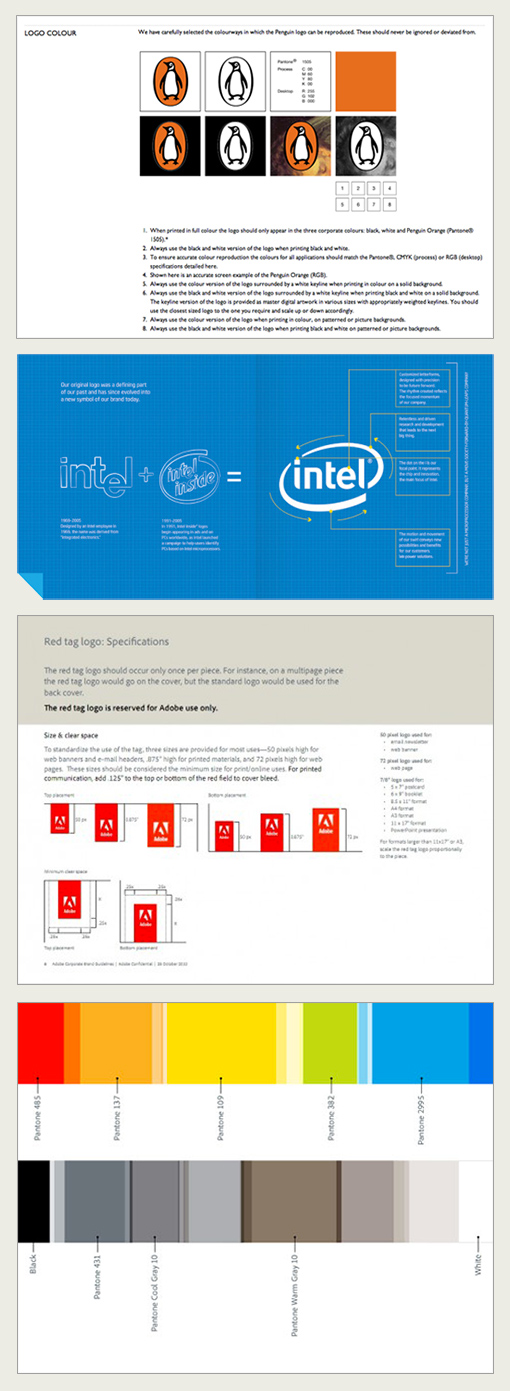A brand identity guide, or logo standards manual, is a document that defines a brand identity and provides guidelines on how a logo and its support elements should be used. Brand identity guides can be brief, concentrating on basic logo standards. They can also be comprehensive “brand bibles” that cover everything from font guidelines to actual examples of print and digital applications.
The biggest benefit of a standards manual is consistency — it gives a company, its vendors and marketing partners the tools to build a cohesive brand identity through systematic implementation. Over time brand identities build equity, take on meaning and become the face of a company. The more consistent a company is with the presentation of its logo, the easier it becomes for consumers to connect with the brand.
Traditionally, standards manuals were extremely rigid with well-defined usage guidelines, templates and inflexible perimeters. In the past 20 years, as marketing and advertising channels have grown exponentially more complex and brand identities have gotten more sophisticated, standards manuals have become more open-ended.
Companies like Burton and Google, with their ever-morphing logos, have changed the way we think about brand identity. In today’s digital world things are much more fluid, and it’s harder than ever for companies to control the use and distribution of their logo. Yes, a standards manual can still be a valuable tool, but its role in corporate communications has shifted.
You may be asking the question, “Does my company need a brand identity standards manual?” I would say most companies with two or more employees that spend money on advertising and marketing should have some type of standards manual, even if it’s a simple two-page document. The larger the company, the more decentralized communication becomes, and a more complex standards manual becomes necessary.
Need a new engine to move your brand forward?
Call Engine 8 at 406.222.7566 to get started.
© 2013 Engine 8, Inc | Reproduction of this content is prohibited without permission. Linking to this article is allowed with appropriate credit.
Examples of identity standards manuals:


